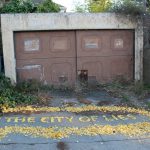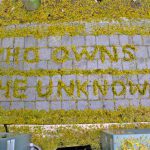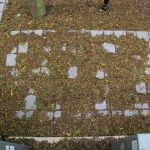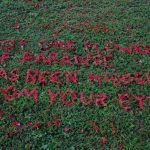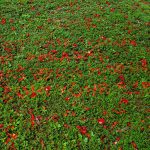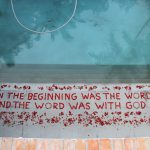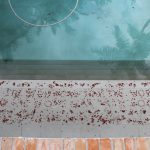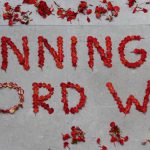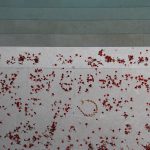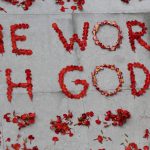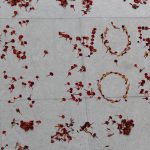The Word in the (Moving) World
A word-art series that returned to the beginning.
works and introduction
by Sam Taylor
Two years ago, I began a series of visual word art pieces that used the materials of the environment. I am interested in exploring how words might live off the page and how they might emerge within the world itself. I’d like to see poetic texts interact in visual and spatial ways that might restore some of the power and immediacy that I feel they are losing in contemporary life.
One of the first and most abiding challenges I encountered as I began this project was that the materials of the world were constantly prone to disintegration and entropy. I tried to write text with autumn leaves, for example, in the mountains of Wyoming, only to quickly encounter a wind so strong that I could not arrange one word before its first letter had already blown away.
At first, I attempted to strategically overcome such obstacles. I sought out days and environments where the wind was subdued. That’s how I came to make In the City of Lies [above] out of gingko leaves. Even so, I had to abridge the scale of the project because the winds started to pick up.
Later, I was excited to find this canvas below along the calm side of my aunt’s house. Because she is a successful corporate lawyer, I was thinking of wealth and ownership in relation to the mysteries of poetry. Given the transience of conditions, I had come to the conclusion that these projects must be done spontaneously and quickly whenever an opportunity arose, using the first significant words that appeared.
I thought that this little sheltered area with its graphed penmanship lines and its tiny, colorful leaves would make an ideal textual sandbox that I could write in all week, forming different phrases, but when I returned two days later, I found the rains had turned Who Owns the Unknown into this:
One morning, the poinciana flowers of South Florida suggested a visual incarnation of some of the opening words from a text poem I had written. In the poem, “The Book of Revelation,” the wonder and ecstatic revelation of the line gets eclipsed later by the darkness of the world. Here, the line had an eternal life of standing alone:
Yet, at the same time, that eternal moment was quickly erased. When I returned the next day after a morning rain, I found the sun shining on its remnants:
With each piece, I realized more and more that the tension between the fixed meanings of language and the fluid nature of the world was what these pieces were most about. Words make fixed claims that aren’t really supported by the nature of the world.
So, I then designed a piece that engaged directly with this inherent tension in language, adopting the opening verse of the The Gospel of John from the New Testament. “In the beginning was the Word, and the Word was with God, and the Word was God.” Again, I formed this out of Poinciana blossoms fallen from a nearby tree, but with this project my primary intention from the beginning was to document what happened to meaning’s claim over time, re-contextualizing it within the world of matter.
The Bible implicitly and explicitly makes claims for the eternal authority of language, and this verse perhaps more than any other distills them, conflating Language with God itself and positing the word before the world. In the religions of the book, the word and divine law are made eternal. But, what if instead language and meaning grow up within the world, organically, within its materials? What if meaning is itself a created thing, impermanent and ever-changing. What happens when the word is formed out of the elements, just as meaning arises within the flux of our lives?
I stayed up all night making this composition and took the above photograph at dawn. I then fell asleep, woke up seven hours later, and took the photograph below. It had not even rained during this time, nor were the winds particularly strong. Mere sunlight and a slight breeze, the passage of time, had transformed the above image into this.
Just seven hours and the order of the world—the meaning written down thousands of years ago and passed through millennium—was gone.
I think many of the conflicts we feel as human beings takes place in this divide between the permanent order of meanings that words create and that we come to expect and the ambiguity, flux, and disintegration of form that are intrinsic to reality. Here you see a close-up before:
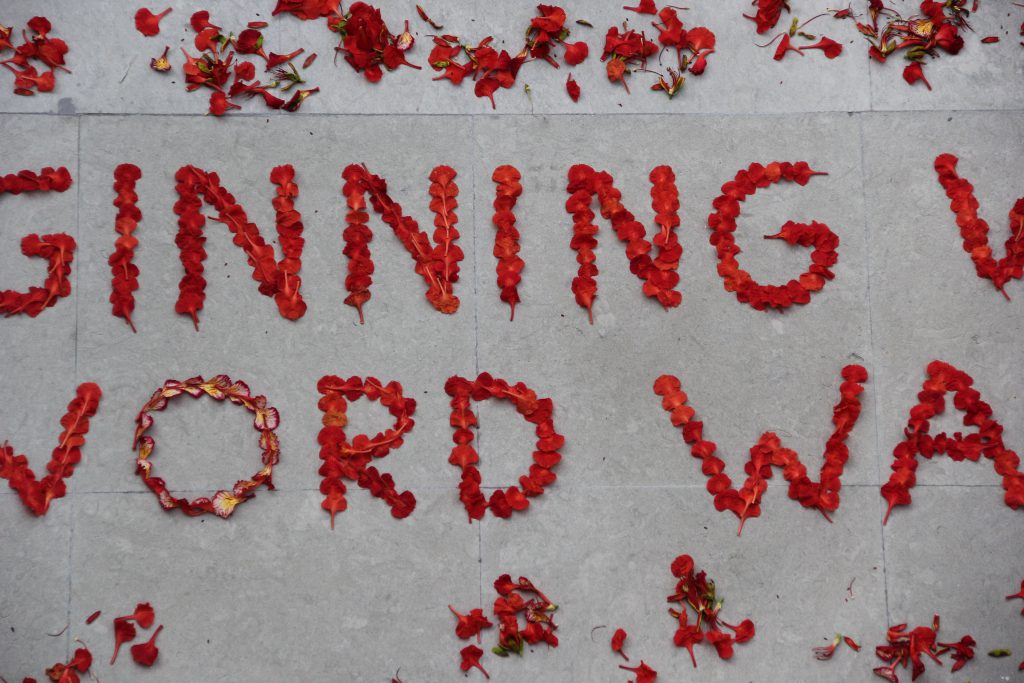
And after:
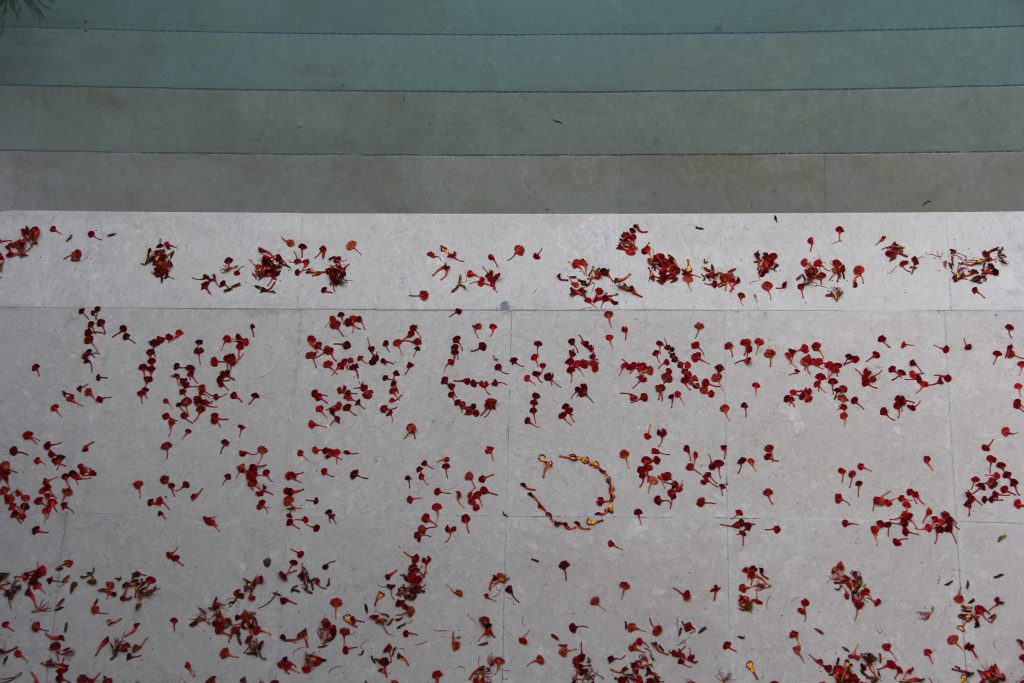
There no longer is any “beginning” here to speak of. The words “beginning,” “word,” and “god” were all efforts to place something before the flux of the world that has here asserted itself. Only a trace of the design remains, and the entropy of the elements itself inscribes the intentions of the piece.
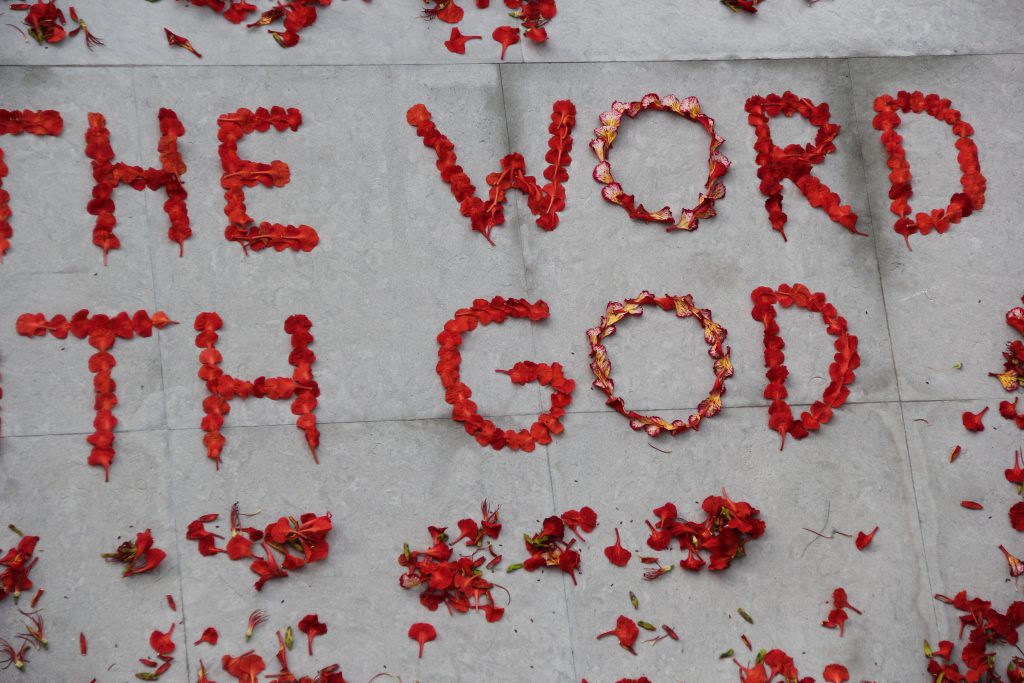
I find poignancy in this precariousness, in the process of meanings being formed within and dissolving back into the substance of the world itself.
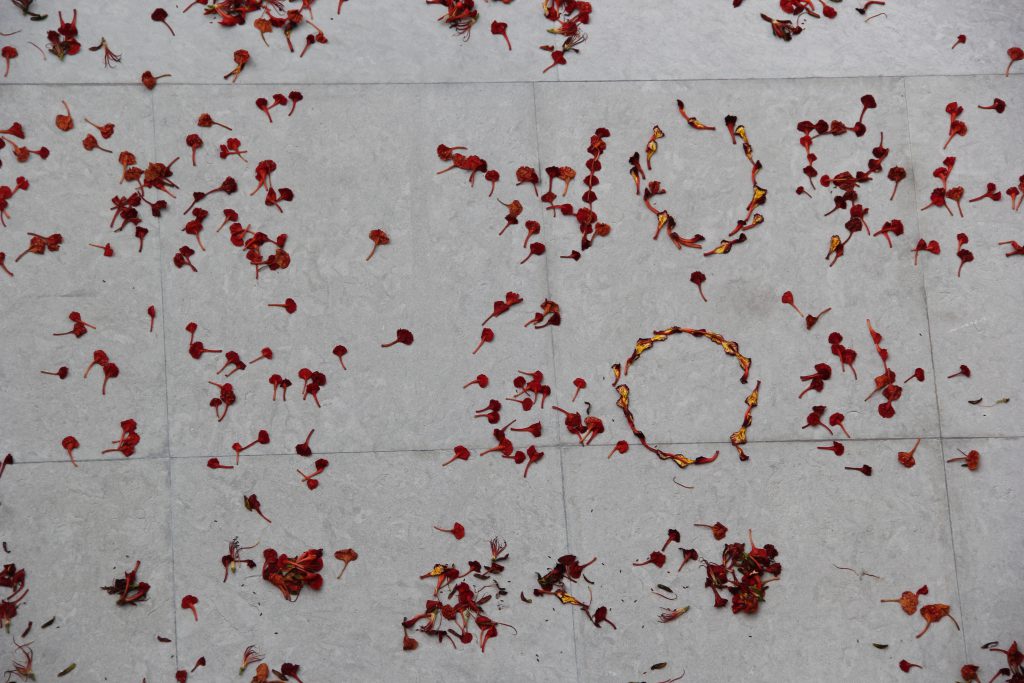
The Word in the (Moving) World
- [In the City of Lies], Berkeley, CA 2013
- [Who Owns the Unknown} Miami, FL 2014
- [Who Owns the Unknown, two days later] Miami, FL 2014
- [Not one flower of paradise] Miami, FL 2014
- [Not one flower of paradise, next day] Miami, FL 2014
- [In the Beginning Was the Word, 7am] Miami, FL 2014
- [In the Beginning Was the Word, 2pm] Miami, FL 2014
- [In the Beginning Was the Word] (detail) Miami, FL 2014
- [In the Beginning Was the Word] (detail) Miami, FL 2014
- [In the Beginning Was the Word] (detail) Miami, FL 2014
- [In the Beginning Was the Word] (detail) Miami, FL 2014
Sam Taylor is the author of two books of poems, Body of the World (Ausable/Copper Canyon) and Nude Descending an Empire (Pitt Poetry Series), and the recipient of the Amy Lowell Poetry Traveling Scholarship. Recent work has appeared in The Kenyon Review, AGNI, and The New Republic, and he is currently the Director of the MFA Program at Wichita State University.

![[In the City of Lies], Berkeley, CA 2013](http://www.tupeloquarterly.com/wp-content/uploads/2016/10/1-In-the-City-of-Lies-1024x683.jpg)
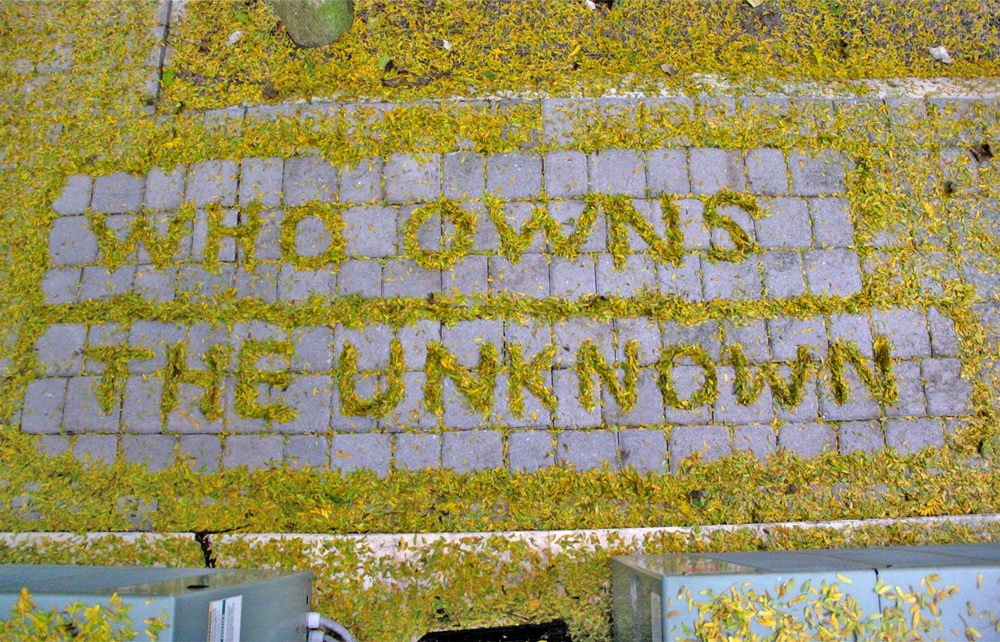
![[Who Owns the Unknown, two days later] Miami, FL 2014](http://www.tupeloquarterly.com/wp-content/uploads/2016/10/Who-Owns-The-Unknown-1024x683.jpeg)
![[Not one flower of paradise] Miami, FL 2014](http://www.tupeloquarterly.com/wp-content/uploads/2016/10/4-NotOneFlowerbefore-1-1024x683.jpg)
![[Not one flower of paradise, next day] Miami, FL 2014](http://www.tupeloquarterly.com/wp-content/uploads/2016/10/5-NotOneFlowerAfter-1024x683.jpg)
![[In the Beginning Was the Word, 7am] Miami, FL 2014](http://www.tupeloquarterly.com/wp-content/uploads/2016/10/6-IntheBeginningA-1024x682.jpg)
![[In the Beginning Was the Word, 2pm] Miami, FL 2014](http://www.tupeloquarterly.com/wp-content/uploads/2016/10/7-InTheBeginningB-1024x683.jpg)
